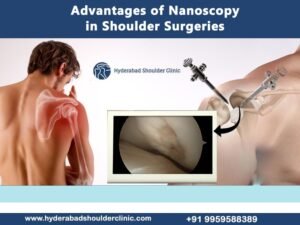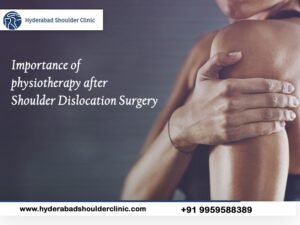Frozen shoulder, medically known as adhesive capsulitis, means stiffening of the shoulder joint followed by pain. The frozen shoulder starts slowly, then gets worse, and the symptoms get better, usually within 1 to 3 years.
A range-of-motion exercises combined with medications are the most common treatment options for frozen shoulders. In rare cases, arthroscopic surgery is done to loosen the joint capsule to allow it to move freely. Repeated episodes of frozen shoulders are common.
Stages of Frozen Shoulder
There are three stages of a frozen shoulder:
Freezing stage: Even the slightest shoulder movement causes pain with a limited range of shoulder movement. The patient is in this stage for 2 to 9 months.
Frozen stage: The shoulder is stiffer than before, so it is much more difficult to use it. However, there is a chance of reduced pain. The patient is in this stage for 4 to 12 months.
Thawing stage: The shoulder mobility slowly improves, and this stage lasts from 5 to 24 months. For some people, the pain worsens at night, sometimes disrupting sleep.
Frozen Shoulder Treatment Options
Conservative Treatments for Frozen Shoulder
Any good shoulder surgeon like Dr.Chandra Shekhar B will first start with a conservative treatment. The main goal is to relieve pain and improve mobility.
- Reduced or modified activity
- Medication to alleviate pain and inflammation
- Injections into the shoulder joint
- To reduce the swelling, if any, ice or heat are applied.
- Physical therapy
If the patient does not experience any relief, or if the symptoms are not coming down, then shoulder arthroscopic surgery is needed. Dr.Chandra Sekhar B has treated many patients with frozen shoulders and is an expert in the latest surgical techniques.
Shoulder Manipulation Under Anesthesia

The patient is given general anaesthesia, and the doctor will move the shoulder in various directions. This will force the tight connective tissues to loosen and stretch. Most patients will notice an increased range of motion and mobility.
Shoulder Arthroscopy
This is a minimally invasive surgery. The surgeon will make a small incision in the shoulder through which a tiny camera is inserted. The camera is attached to a thin tube called an arthroscope. By getting a clear image through the camera, the surgeon will cut through the shoulder capsule and remove scar tissue from the joint. This is called a capsular release. After the scar tissue is removed, the range of motion increases. Arthroscopic surgical techniques offer benefits such as quicker recovery times, less pain and improved outcomes.
Physical Therapy

Our experienced physical therapists will design exercises to help recover your shoulder movement. One should follow the exercise regime sincerely, as it will help regain as much movement as possible.
Within 12 to 18 months, most frozen shoulder patients get better. But if the symptoms are severe, other treatment options are:
Steroid injections
The surgeon will inject corticosteroids into the shoulder joint to help reduce pain and improve shoulder mobility. They work better if administered at the starting stages of a frozen shoulder.
Hydrodilatation
Sterile water is injected into the joint capsule to help stretch the tissue and ease up the joint movement. For better results, steroids may also be injected.
Acupuncture
Acupuncture is an ancient form of treatment where hair-thin, flexible needles are placed into certain parts of the skin. They have to be maintained for 15 to 40 minutes. The needles are not put in too inside, and some patients do not feel any prick.
Nervous stimulation
A transcutaneous electrical nerve stimulation (TENS) device is a unit that sends tiny electrical current pulses along the nerve path. There is no pain, and the current passed is very mild, so the patient is safe. The TENS machine will release endorphins that curb the pain or block pain-carrying fibres.
Recovery from frozen shoulder treatments
Post-Surgery Recovery: Post-surgery physical therapy is crucial to maintain the full range of motion as expected with surgery. One might take 6 weeks to 3 months, and one has to be “patient” since it is a slow process. The recovery time depends on the commitment to therapy. The patients usually have a good long-term outcome after surgery. The best part is that the patients experience reduced or no pain along with improved range of motion. If the patient has diabetes, there is some degree of continued shoulder stiffness even after surgery.
In some cases, surgeons use a regional nerve block or indwelling nerve catheter for extended pain relief after surgery. Since there is no pain, the physical therapy exercises can be started immediately after the surgical procedure.
We at Hyderabad Shoulder Clinic give utmost importance to the patient’s recovery. We believe that with proper physical therapy, the patients will cope well in both surgical and non-surgical methods. Please visit our website https://hyderabadshoulderclinic.com/ for more information or contact us at +919959588389 and shoulderandsportsclinic@gmail.com





